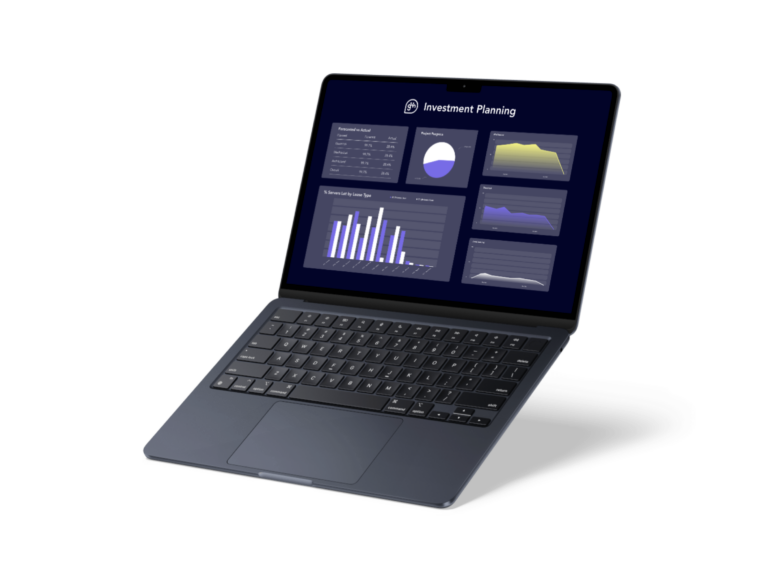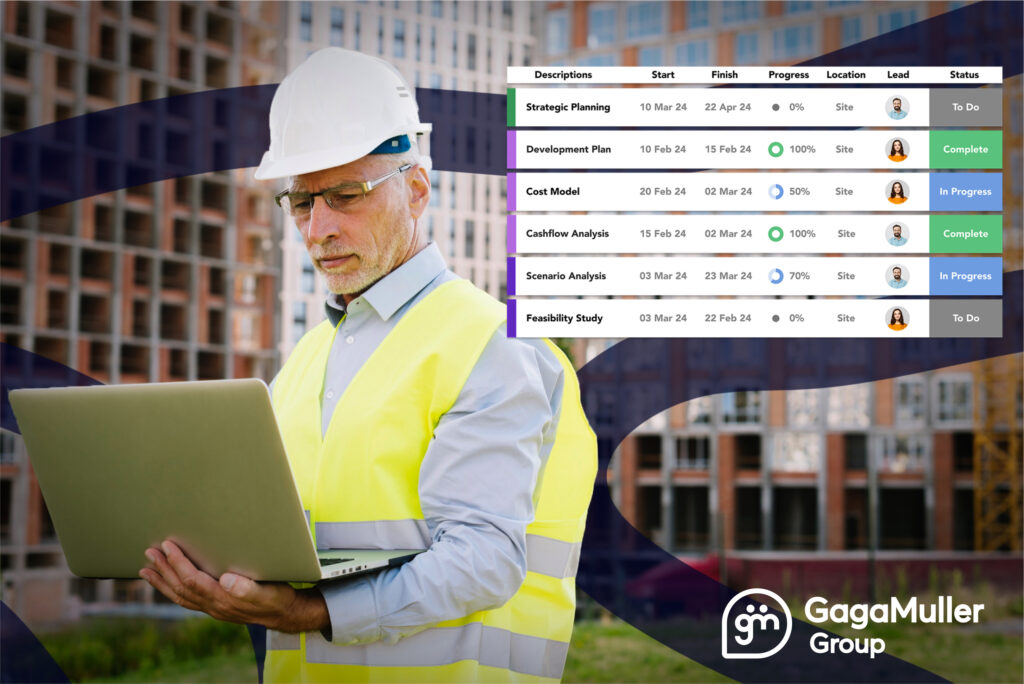
Navigating the Digital Transformation Journey: A Guide for Construction Professionals
BLOG The construction industry, long tethered to traditional methods, is
The construction industry is notorious for being capital-intensive and complex, with projects ranging from intricate renovations to significant infrastructure developments. It’s no wonder that the industry is fraught with delays, cost overruns, and outright failures. But is the construction industry doomed to be inefficient and wasteful? Or is there a way to turn things around?
Having a solid understanding of the technical challenges around the full lifecycle of a project is critical to it’s success. Data driven strategic planning sets the direction for the project, ensuring alignment with broader organisational goals and KPI’s. It involves comprehensive analysis, considering market dynamics, technological advancements, regulatory landscapes, and financial forecasting.
At GagaMuller Group, we believe that the construction industry is ripe for disruption. We are leading a new era of Project Management, enabling companies to adopt robust information management standards and processes for seamless digital transformation. This empowers companies to embrace innovative technologies to break free from the shackles of inefficiency and achieve exceptional results.
In the ever-evolving landscape of asset management, organisations must adopt a holistic approach that encompasses the entire lifecycle of an asset. This ensures that decisions made in the early stages, such as feasibility and strategy align with the long-term goals and objectives of the organisation.
The early stages of the asset lifecycle, encompassing feasibility and strategy are often overlooked or treated as mere formalities. However, these early phases shape the project’s trajectory, and poor decisions at this stage can derail the whole journey.
GagaMuller Group advocates for a rigorous approach to feasibility and strategy, ensuring projects are viable and aligned with strategic goals, considering financial, technical and operational aspects.

Strategic planning and feasibility assessments are the cornerstone of successful large capital projects. They provide a roadmap for the project, identifying potential risks, outlining objectives, assessing the viability of the endeavour, and mitigating potential setbacks.
GagaMuller Group’s expertise in architecture, engineering, and construction ensures that the assumptions and strategy for project delivery are accurate and achievable to ensure project success. During the early stages of project, it is crucial to make the correct assumption on cost model, project schedule, logistic planning, procurement strategies, resourcing, modulisation and digital project delivery. Erroneous assumptions or oversight in the early stages can have significant negative consequences. Inaccurate projections of costs, timelines, or market demand can lead to budget overruns, delays, or even project failure.
GagaMuller Group has emerged as a trusted partner in navigating these complex landscapes. Our services involve comprehensive analysis, considering market dynamics, technological advancements, regulatory landscapes, and financial aspects. By adopting a full lifecycle approach and prioritising early stages, organisations can mitigate risks, optimise resource utilisation, and maximise ROI.

GagaMuller Group recently collaborated with a Large residential client in the UK to develop an integrated project delivery (IPD) strategy to maximise modularisation, off-site construction and digital project delivery.
The project was initially shackled by several challenges, including an incomplete financial model, unclear project delivery strategy and limited asset typology information. These limitations hindered the ability to effectively assess project feasibility, optimise resource allocation, and make informed decisions.
GagaMuller Group’s team found solutions to these limitations by connecting this to 3D massing model to unearth hidden insights from within the model geometry meta data. Leveraging the scenarios crafted in the Cost Model, we integrated this data with the model data in Power BI, providing our clients with a visual insight into the Cost Model of their project.
This enabled the client to navigate complex feasibility scenarios, such as:

GagaMuller Group’s vision to innovate, disrupt and integrate empowers organisations to break free from the limitations of traditional project delivery methods and unravel the cascading advantages that propel them to new heights of success. Our team of experts are dedicated to help you achieve your strategic goals to maximise your project outcomes.
Partner with GagaMuller Group today and embark on a journey of transformation. We will tailor a comprehensive solution that addresses your unique project challenges and organisational needs.

BLOG The construction industry, long tethered to traditional methods, is

BLOG The construction industry is notorious for being capital-intensive and

BLOG This blog is going to discuss how you can
Apply Now
Apply Now